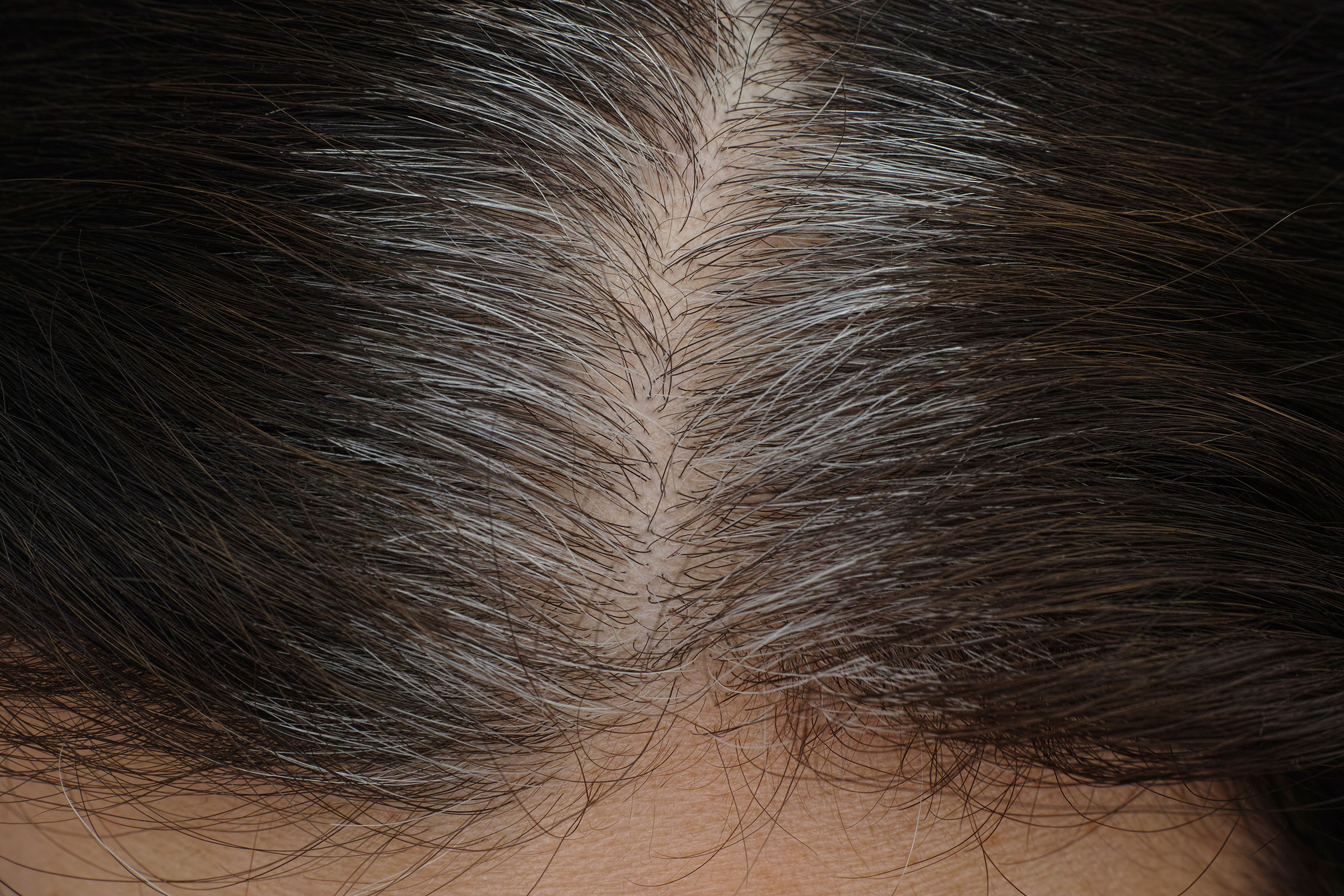
This morning I rose from my sleepless bed, my bare feet padding along the wooden floors to arrive at my bathroom sink. There, I brushed the nighttime off my teeth, took my temperature and ran a comb through my hair. More gray crept from my center part. Little estuaries of silver trickling through. I silently cheered their progress.
In my eighth week of sheltering in place under government order, I’m contemplating making the break. What if I no longer colored my hair? What if I gave up on the formula my stylist perfected, over years, to achieve my honey-wheat-blonde base with ribbons of “natural” highlights?
Against the backdrop of life-and-death decisions made every hour during this coronavirus pandemic, my question must seem trivial. But, for me, it’s a meaningful, potentially pivotal call.
Like many women, I’ve fought with my hair most of my life. I ironed out the frizz during my awkward teenage years and attempted to tame my curls as a young staffer on Capitol Hill. I began to color and Keratin my hair as I made my career in corporate America. As some of my features began to shift and sag with age, my beautifully coiffed blonde bob became my prized, signature feature.
Keep up to date with our daily coronavirus newsletter by clicking here.
I don’t know who wrote the rules of women’s hair, but I’ve obeyed them. For women in big corporations–and I’ve worked in three, American Express, Estee Lauder and Pfizer–there are two rarely broken codes: every woman has a silky straight blowout and hardly anyone is gray.
This is not the first time I’ve flirted with the idea of letting go of the coloring. The driver is not so much the considerable hours and expense involved in maintaining my hair as the desire to confidently embrace my age and life experience. To rock it, rather than hide it.
“No! Not yet,” my mom shrieks each time. Why, as a woman near 60, I still inquire or care about what my mother thinks is a subject for another day. My mom, in her 80s, has jet black hair. Now, during family Zoom calls, she wears a baseball cap.
Today my relationship with the gray orb atop my head is different. I’m not worrying about fashion or social norms. Maybe going gray is a symbol—a demarcation of my life before and after. My new appearance forged in the sorrow and pain of the pandemic. A daily reminder of my 91-year-old mother-in-law’s struggle to survive in a senior center rampant with the disease, of my young adult daughter’s forced return home from graduate school when her university shuttered, and of my cousin’s anguish at having to close the restaurants he spent his life building. The silver streaks on my head keeping these losses top of mind, literally.
My new wild hair would make the pandemic’s mark permanent. It could signify that I, too, have emerged from this devastating time transformed. Going forward, I’ll no longer be a woman of trivial pursuits.
My silver mane will stand for courage and strength. Many women I admire have made the leap: the bold and brilliant European Central Bank President Christine Lagarde; and the competent and no-nonsense former United States Health and Human Services Secretary Kathleen Sebelius to name a couple.
Surely, I’m among the most fortunate. I’m safely sheltered and have purposeful work. Each night when I sit down to a home cooked meal with my wife and daughter, I raise my glass and say the same toast: “To another day healthy and together.”
I still have a way to go on this journey of heart and hair. Will I see this change through or run to the beauty shop the minute this virus is in the rearview mirror? Will I have brilliant white locks or a head of dishwater-gray hair? Will my vanity triumph in the end?
At present, there’s a stubborn dark patch that sits just above my forehead, fighting back against this tide. Still, gray wisps persist along my hairline and feather out from my temples. Maybe they are wings.
Please send any tips, leads, and stories to virus@time.com.
More Must-Reads from TIME
- Why Trump’s Message Worked on Latino Men
- What Trump’s Win Could Mean for Housing
- The 100 Must-Read Books of 2024
- Sleep Doctors Share the 1 Tip That’s Changed Their Lives
- Column: Let’s Bring Back Romance
- What It’s Like to Have Long COVID As a Kid
- FX’s Say Nothing Is the Must-Watch Political Thriller of 2024
- Merle Bombardieri Is Helping People Make the Baby Decision
Contact us at letters@time.com